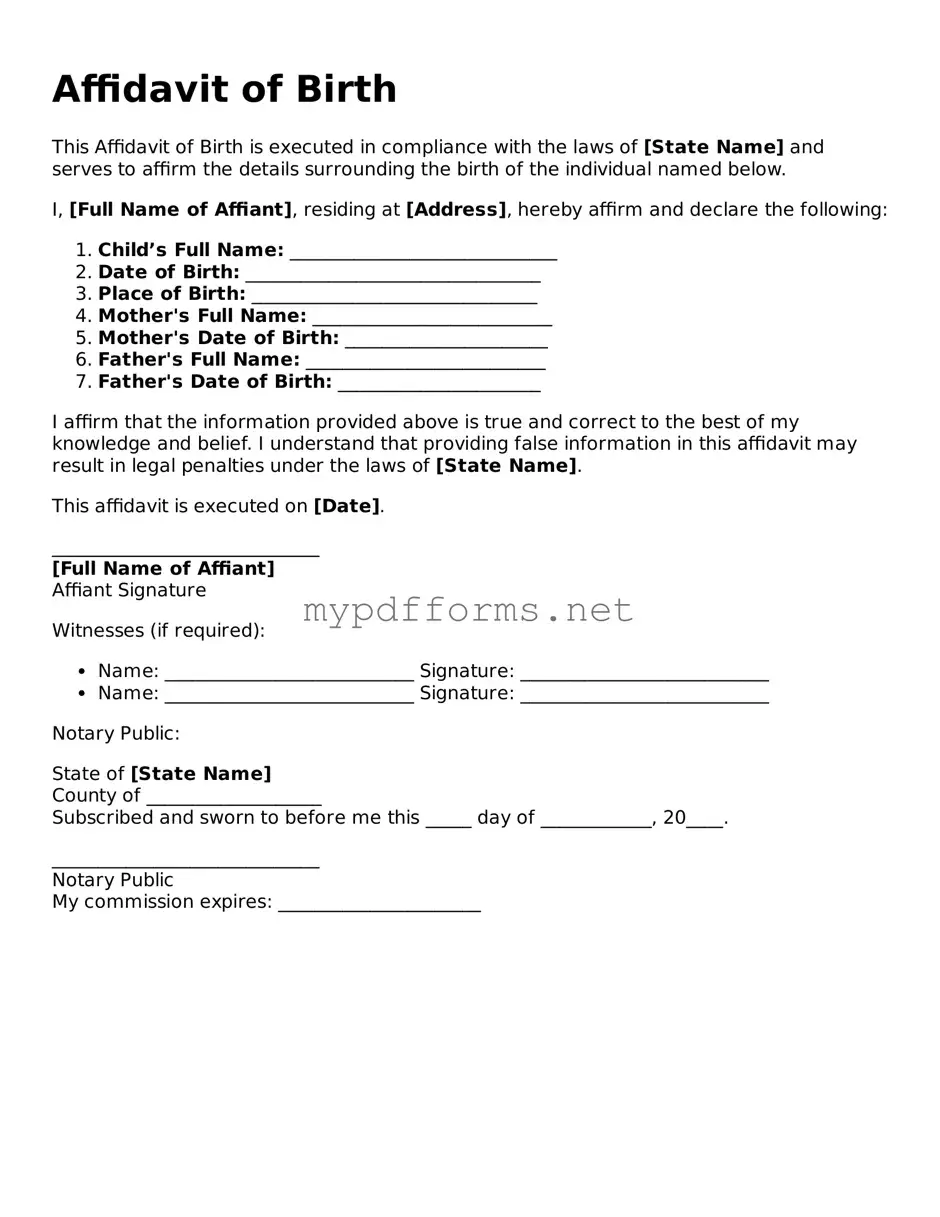The Affidavit of Birth form shares similarities with a Birth Certificate. Both documents serve as proof of an individual's birth and identity. A Birth Certificate is typically issued by a governmental authority and contains essential information such as the individual's name, date of birth, place of birth, and parentage. While the Affidavit of Birth may be used in situations where a formal birth certificate is unavailable, it still provides a sworn statement that confirms the details of the birth, making it a valid alternative in certain contexts.
Another document similar to the Affidavit of Birth is the Certificate of Live Birth. This document is often generated by hospitals at the time of a child's birth and includes information about the newborn and the parents. Like the Affidavit of Birth, the Certificate of Live Birth serves to validate the occurrence of birth. However, the Certificate of Live Birth is usually more official, as it is filed with the state, whereas an Affidavit of Birth can be created by individuals without the immediate involvement of a governmental entity.
The Declaration of Birth is another document that resembles the Affidavit of Birth. This declaration is typically used in cases where the birth is not registered due to various reasons, such as home births or births in non-traditional settings. Both documents aim to establish the legitimacy of the birth and provide necessary details, but the Declaration of Birth may be less formal and not require notarization, depending on the jurisdiction.
The Texas Affidavit of Gift form serves as an essential legal instrument for the clear and formal transfer of property, particularly when no financial transaction occurs, such as gifting a vehicle. This document not only protects the interests of both the donor and recipient but also facilitates the necessary paperwork for registration and tax implications related to the gifted property. If you need to utilize this form, download it now to ensure a smooth transfer process.
A Statutory Declaration can also be compared to the Affidavit of Birth. This document is a legal statement made under oath, often used to confirm facts. While a Statutory Declaration can cover a range of topics, when used in the context of birth, it serves a similar purpose as the Affidavit of Birth. Both documents require the individual to attest to the truthfulness of the information provided, reinforcing the importance of accuracy in establishing identity.
Lastly, the Adoption Certificate is similar in that it serves as a legal document confirming a person's identity and familial relationships. This certificate is issued when a child is legally adopted, reflecting the new legal status of the child. While the Affidavit of Birth focuses on the original birth details, the Adoption Certificate documents the changes in parental rights and responsibilities. Both documents play crucial roles in establishing identity and lineage, albeit in different contexts.
